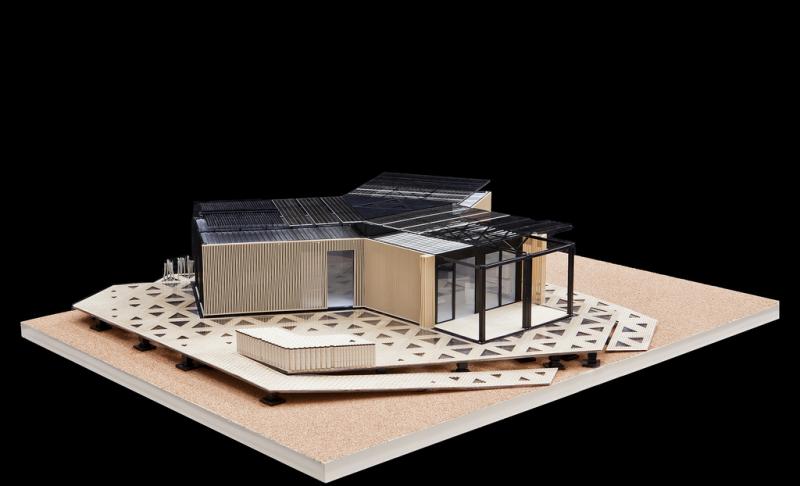Team China Transforms Shipping Containers Into a Solar-Powered House
Friday, June 17, 2011By Erin Pierce
Editor’s Note: This entry has been cross-posted from DOE’s Energy Blog.
In honor of the U.S. Department of Energy Solar Decathlon—which challenges 20 collegiate teams to design, build, and operate solar-powered houses that are cost-effective, energy-efficient, and attractive—we are profiling each of the 20 teams participating in the competition.
Design aesthetics, engineering, market appeal—these are just a few of the elements Solar Decathlon houses will be evaluated and scored on. But new this year to the competition is the Affordability Contest. Teams are encouraged to think creatively and strategically not only about the overall structure and functioning of their houses but also on how accessible they can make their designs to everyone.

Team China’s Y Container design model
Team China, which is composed of students and faculty from Tongji University, has risen to the affordability challenge with an innovative strategy: take discarded shipping containers from the docks and refurbish them as the primary structure of a home.
“We transformed standard shipping containers in order to compensate for the cost of photovoltaic technology,” explained Hua Guodong, primary student architect. This allows the team to incorporate clean energy technologies, such as solar panels, into its design while keeping construction costs low.
Dubbed the Y Container in reference to its Y shape, the house is a combination of six recycled shipping containers that sit atop an expansive deck. In addition to providing space for outdoor seating, the multi-functional deck collects and filters rainwater for domestic needs. Energy-efficient features such as super-insulating materials and a natural ventilation tunnel contribute to the sustainable design.
Ease of transportation will play a critical role as the competition nears. After construction is complete, the students must deconstruct their house, ship it to Washington, D.C., and reconstruct it again at the start of the competition. Because of the use of standard shipping containers, the Y Container will be easy to transport, assemble, and expand—giving residents the freedom to build anywhere and in any configuration. (The Y shape is just a start.)

Students from Tongji University work on their Solar Decathlon project. (Courtesy of Team China)
For Team China, the Solar Decathlon has been a demanding and challenging project but not one without its rewards. Said Hua Guodong, “I have to say, although the work is hard, it’s still a very exciting and valuable experience for me and the entire team. Nothing can compare with this experience.”
Erin Pierce is an energy technology program specialist for the Department of Energy’s Office of Energy Efficiency and Renewable Energy.
Tags: Solar Decathlon, Solar Decathlon 2011, Team China, Teams
